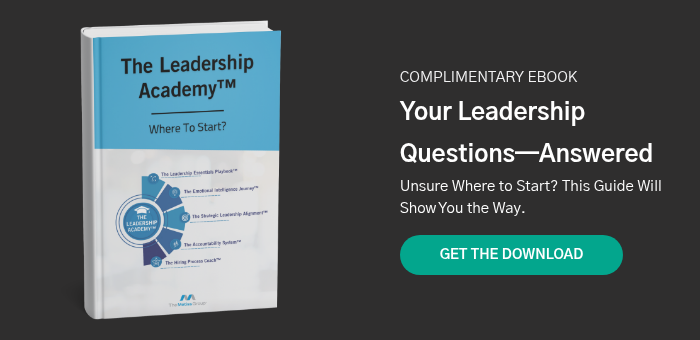Chat GPT Prompt to Strengthen Critical Thinking in Leaders
March 19th, 2025
4 min read
By Ingrid Ellis

Great leaders don’t just trust their gut—they challenge their own thinking. The best decision-makers aren’t the ones who always believe they’re right, but the ones who are willing to test their assumptions, consider different perspectives, and adapt when presented with stronger reasoning.
Here’s the catch: human nature makes that difficult. We tend to seek out information that reinforces what we already believe. We avoid cognitive dissonance. We instinctively defend our positions, even when they might be flawed.
That’s where generative AI can help. It can act as a powerful tool for sharpening your reasoning, identifying biases, and strengthening your ability to evaluate complex issues from multiple angles.
It's as easy as four steps:
Step 1: Pick a topic you feel strongly about
Step 2: Challenge yourself with a debate prompt
Step 3: Engage in the debate and reflect
Step 4: Take it a step further with roleplay
Step 1: Pick a Topic You Feel Strongly About
The first step is to choose a topic where you already have a firm opinion. It could be related to leadership, business, or even broader social, political, or philosophical issues. The key is to pick something you genuinely believe — something that, if challenged, would make you instinctively push back.
A few examples:
- “Workplace culture is more important than salary when it comes to employee retention.”
- “Leaders should always prioritize long-term strategy over short-term results.”
- “Remote work is just as productive as in-office work, if not more.”
The goal is to step outside of your comfort zone and engage in a real intellectual challenge. If you only debate topics you feel neutral about, the exercise won’t be as effective.
Once you have your topic, write down your core reasoning. Why do you believe this? What evidence supports your position? This will help you prepare for the next step.
Step 2: Challenge Yourself With a Debate Prompt
Now, it’s time to let AI play devil’s advocate. Generative AI can present counterarguments, push back against weak points, and even highlight logical fallacies in your reasoning.
So go to your favorite generative AI tool, whether it be ChatGPT, Claude, Perplexity, etc. Then use this prompt:
"I strongly believe [state your opinion]. I want you to take the opposite stance and debate me as if you genuinely believe it. Do not concede to my points — push back and defend your position with logic, examples, and evidence. Also, if I use any logical fallacies in my argument, point them out and explain why they are flawed."
Let’s say a person believes:
"I think emotional intelligence is more important than technical skills in leadership."
Generative AI might respond with something like this:
"I disagree. While emotional intelligence is valuable, technical expertise is the foundation of credibility. A leader without deep technical knowledge struggles to gain respect from their team. Emotional intelligence alone cannot compensate for a lack of competence in decision-making, troubleshooting, and industry-specific challenges. While strong interpersonal skills help build relationships, they do not replace the need for technical proficiency in leadership roles."
As you debate, AI can also flag logical fallacies in your reasoning, such as:
- Straw man arguments – Misrepresenting the opposing stance to make it easier to refute.
- Confirmation bias – Ignoring evidence that contradicts your position.
- False dilemmas – Framing an issue as “either/or” when multiple solutions exist.
By engaging in this structured back-and-forth, you’re forced to sharpen your reasoning, anticipate objections, and refine how you communicate your perspective.
Step 3: Engage in the Debate and Reflect
Now comes the real work: counter AI’s points, refine your argument, and see how well you hold up when faced with strong opposition. The goal isn’t to “win” the debate but to strengthen your ability to think critically, recognize bias, and approach problems with more nuance.
As you go through the discussion, consider these questions:
- Did AI bring up any points you hadn’t considered before?
- Were you able to defend your position with logic and evidence, or did you rely on emotion and assumptions?
- Did AI flag any biases or logical flaws in your argument?
- If you had to adjust your viewpoint based on new information, what would that look like?
Once you’ve worked through the debate, take a few moments to reflect. What did you learn? Did this exercise make your reasoning stronger? Did it expose any blind spots in your thinking?
Step 4: Take It a Step Further With Roleplay
If you want to push your critical thinking even further, try using generative AI in a roleplaying exercise. Instead of just debating abstract topics, apply this method to real-world leadership scenarios.
For example, say you’re facing a tough decision at work, like whether to approve a risky new initiative. You could ask AI to play the role of a skeptical board member, a cautious CFO, or an employee resistant to change.
Use a prompt like this:
"I’m considering [explain your decision], and I need to test my reasoning. Act as someone who strongly opposes this idea. Challenge me with tough questions and force me to defend my position with logic and evidence."
Or, if you’re preparing for a high-stakes conversation:
"I need to convince my team to support [a particular strategy or change]. Act as a team member who is resistant to this idea, and let’s have a conversation where I try to address your concerns."
By engaging in these AI-powered roleplays, you’re not just practicing debate skills—you’re stress-testing your leadership thinking in ways that prepare you for real-life challenges.
Why This Process Works
Most leaders like to believe they think critically, but in reality, we all have blind spots. We instinctively defend our own ideas, and we often underestimate how persuasive opposing arguments can be.
By using generative AI as a debate partner, you:
- Strengthen your reasoning skills. You’re forced to defend your beliefs with logic and evidence.
- Expose personal biases. AI can highlight gaps in your thinking you might otherwise ignore.
- Develop intellectual flexibility. You become more comfortable questioning your own assumptions and adjusting when necessary.
- Improve decision-making. You learn to evaluate multiple perspectives before making high-stakes choices.
The Bottom Line
Generative AI can be an incredible tool for sharpening your critical thinking skills. Whether you’re debating leadership philosophies, testing your reasoning on a big decision, or preparing for a tough conversation, AI can help you refine your thinking, challenge your biases, and approach problems with greater clarity.
The next time you’re faced with a complex leadership challenge, don’t just trust your instincts. Use AI to test your perspective, challenge your reasoning, and make sure you’re thinking as clearly and strategically as possible.
Want to take your leadership skills even further? Here at The Metiss Group, we help leaders develop sharper decision-making, stronger communication, and more adaptable thinking through The Leadership Academy.
Now that you understand a practical way to use AI to become a better decision-maker, the next step is to understand the best leadership development companies so you can see if more intentional leadership development would be a good fit for you or your organization.
Topics:
